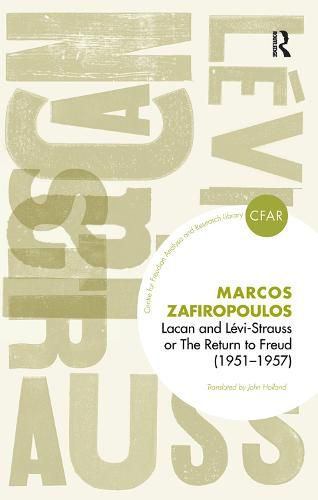Readings Newsletter
Become a Readings Member to make your shopping experience even easier.
Sign in or sign up for free!
You’re not far away from qualifying for FREE standard shipping within Australia
You’ve qualified for FREE standard shipping within Australia
The cart is loading…






Lacan and Levi-Strauss are often mentioned together in reviews of French structuralist thought, but what really links their distinct projects? In this important study, the author shows how Lacan’s famous ‘return to Freud’ was only made possible through Lacan’s reading of Levi-Strauss. Via a careful and illuminating comparison of the work of the psychoanalyst and that of the anthropologist, Zafiropoulos shows how Lacan’s theories of the symbolic function, of the power of language, of the role of the father and even of the unconscious itself owe a major debt to Levi-Strauss. Lacan and Levi-Strauss is much more than an academic study of the relations between these two thinkers: it is also a superb introduction to the work of Lacan, setting out with detail and lucidity the major concepts of his work in the 1950s.
$9.00 standard shipping within Australia
FREE standard shipping within Australia for orders over $100.00
Express & International shipping calculated at checkout
Lacan and Levi-Strauss are often mentioned together in reviews of French structuralist thought, but what really links their distinct projects? In this important study, the author shows how Lacan’s famous ‘return to Freud’ was only made possible through Lacan’s reading of Levi-Strauss. Via a careful and illuminating comparison of the work of the psychoanalyst and that of the anthropologist, Zafiropoulos shows how Lacan’s theories of the symbolic function, of the power of language, of the role of the father and even of the unconscious itself owe a major debt to Levi-Strauss. Lacan and Levi-Strauss is much more than an academic study of the relations between these two thinkers: it is also a superb introduction to the work of Lacan, setting out with detail and lucidity the major concepts of his work in the 1950s.